Libraries represent humanity’s dedication to preserving knowledge while creating spaces that inspire learning, contemplation, and wonder. The world’s most beautiful libraries transcend their practical function as repositories of books, becoming architectural masterpieces that celebrate the written word through stunning design, artistic details, and atmospheres that make visitors feel as though they’ve entered sacred spaces dedicated to human intellectual achievement.
Here is a list of the 20 most beautiful libraries that offer experiences combining intellectual curiosity with architectural wonder, proving that the spaces we create for books can be just as inspiring as the words they contain.
Trinity College Library, Dublin
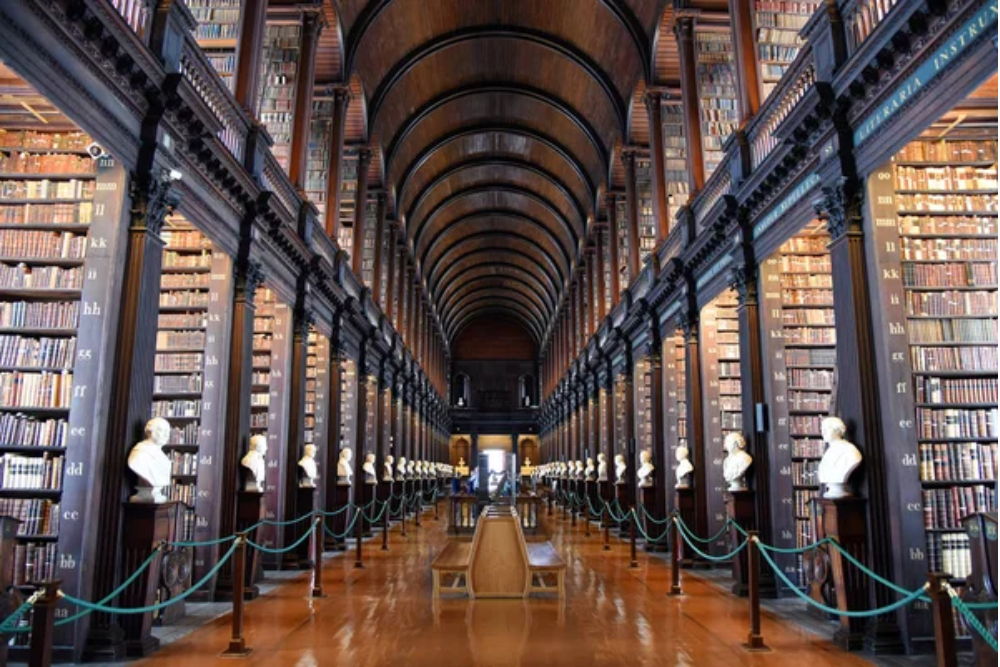
The Long Room stretches 213 feet through Trinity College’s Old Library, housing 200,000 of the university’s oldest books beneath a stunning barrel-vaulted ceiling supported by marble busts of philosophers and writers. Built in the early 18th century, this architectural marvel inspired the Jedi Archive in Star Wars films while continuing to serve as a working research library.
The library’s legal deposit rights mean it receives copies of every book published in Ireland and the United Kingdom, creating a living collection that grows daily within these historic walls.
Beinecke Rare Book Library, Yale University
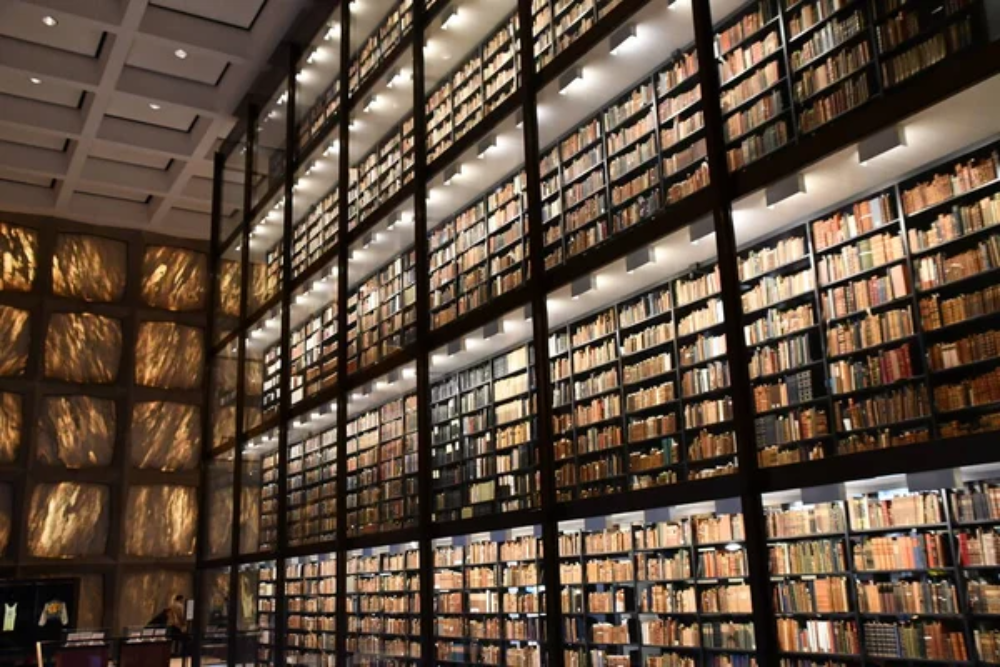
This modernist marvel utilizes translucent marble panels instead of windows, creating an ethereal lighting effect that protects precious manuscripts while bathing the interior in warm, golden light. The six-story glass tower in the center showcases rare books, treating them like works of art, while the building’s climate-controlled environment preserves materials that date back centuries.
Gordon Bunshaft’s 1963 design revolutionized library architecture by proving that modern buildings could create reverent atmospheres for ancient texts.
Like Travel Pug’s content? Follow us on MSN.
Admont Abbey Library, Austria
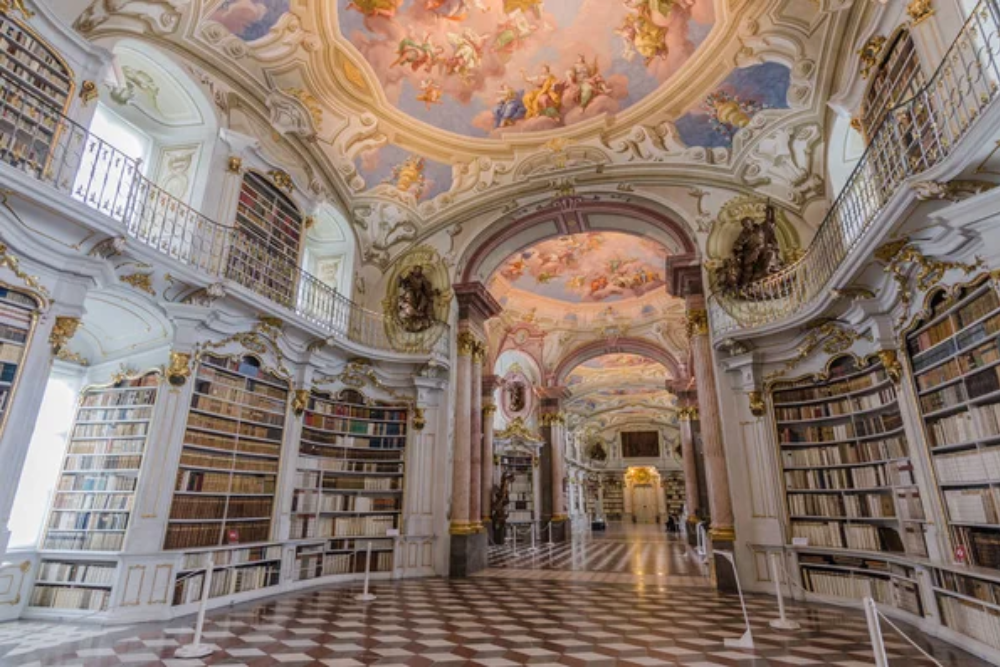
This Baroque masterpiece combines religious devotion with intellectual pursuit, featuring ceiling frescoes that depict the stages of human knowledge while housing over 70,000 volumes in hand-carved wooden shelves. Gold leaf details catch natural light streaming through tall windows, while the library’s collection includes medieval manuscripts, early scientific texts, and illuminated religious works.
The monastery’s continuous operation since 1074 means that this library has served scholars for nearly a millennium, maintaining its original spiritual atmosphere.
Library of Alexandria, Egypt
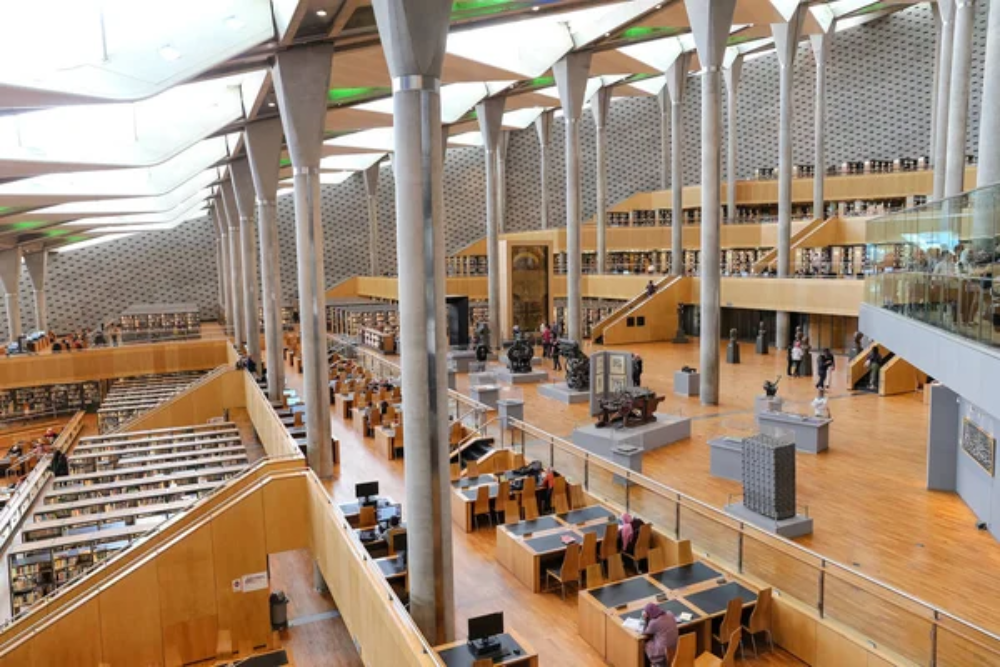
The modern Bibliotheca Alexandrina honors the ancient world’s greatest library through contemporary architecture that combines cutting-edge technology with classical inspiration. The building’s distinctive tilted disk design creates dramatic interior spaces, while the main reading room accommodates thousands of researchers beneath a stepped ceiling that maximizes natural light.
Manuscripts, rare books, and digital collections attempt to recapture the universal knowledge gathering that made the original Library of Alexandria legendary.
Strahov Monastery Library, Prague
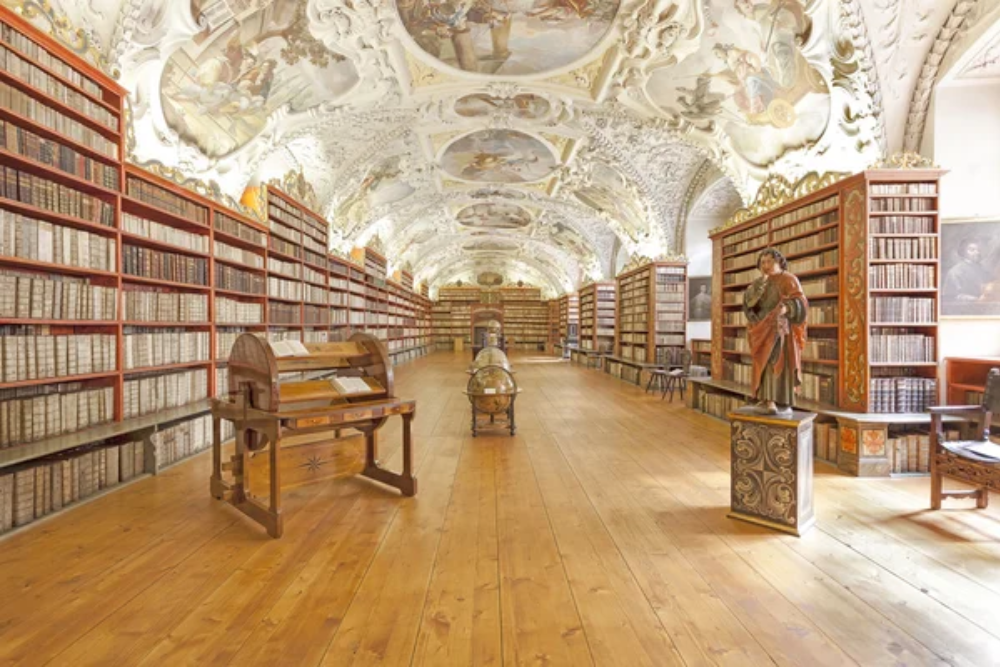
Two magnificent Baroque halls house philosophical and theological collections within walls decorated with elaborate frescoes, globes, and scientific instruments that reflect the monastery’s role in advancing human knowledge. The Philosophical Hall’s ceiling depicts the spiritual development of humanity, while the wooden galleries provide access to books arranged by subject in methods that have remained unchanged for centuries.
The library’s collection includes medieval manuscripts, early printed books, and scientific works that document the evolution of European thought.
Like Travel Pug’s content? Follow us on MSN.
George Peabody Library, Baltimore
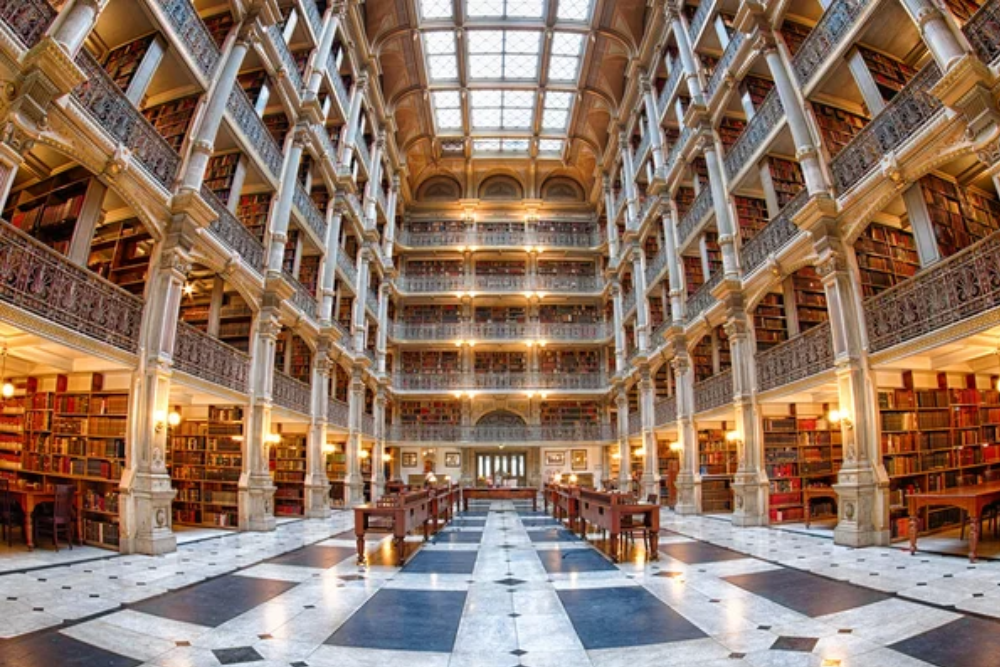
This cathedral of books features five tiers of cast-iron balconies reaching toward a skylight 61 feet above the marble floor, creating a sense of ascending toward enlightenment through literature. The library’s 19th-century design influenced similar institutions across America, while its collection focuses on British and American literature, history, and biography.
The building’s restoration preserved its original details while adding modern conveniences, ensuring that this architectural treasure continues to serve researchers and inspire visitors.
Marciana Library, Venice
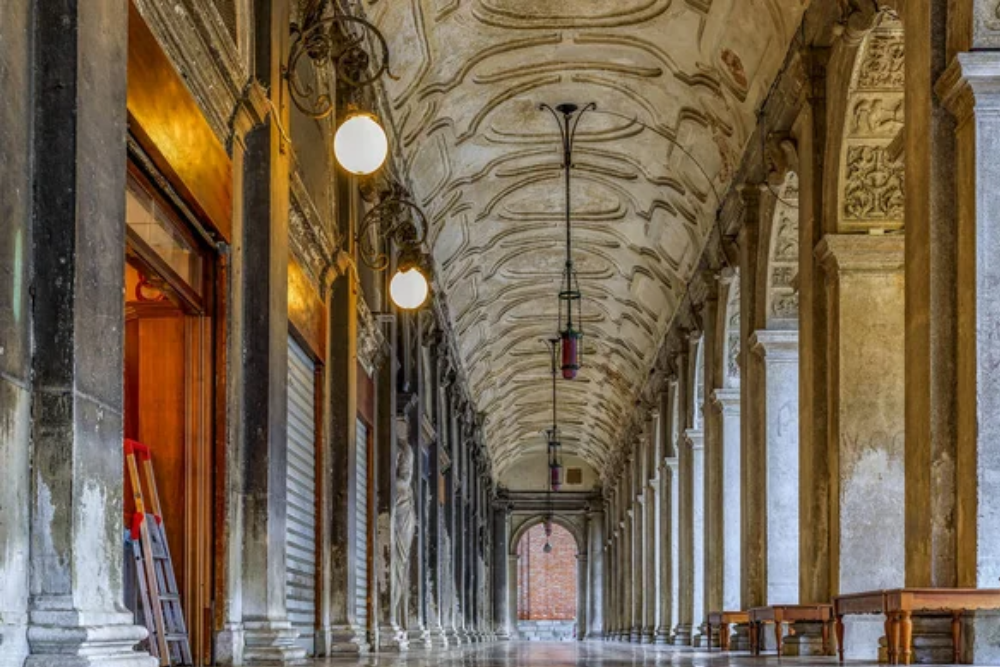
Built in the 16th century facing St. Mark’s Square, this Renaissance library houses one of the world’s most important collections of Greek, Latin, and Oriental manuscripts within rooms decorated by Tintoretto, Veronese, and other Venetian masters. The library’s reading rooms offer views across Venice’s lagoon.
At the same time, the collection comprises Byzantine codices, medieval illuminated manuscripts, and early printed books that document the intellectual exchange between the East and the West. UNESCO recognition acknowledges both the building’s architectural significance and its irreplaceable manuscript collection.
Austrian National Library, Vienna
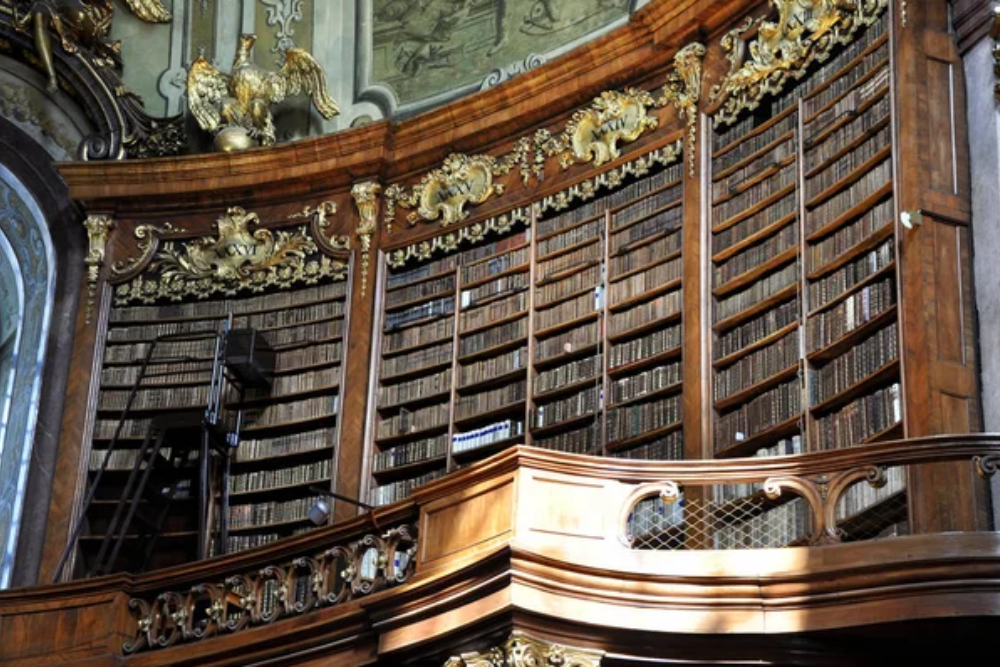
The State Hall of this imperial library showcases Baroque grandeur through Daniel Gran’s ceiling frescoes, elaborate wooden bookcases, and Prince Eugene’s collection housed within the Habsburg palace complex. Four massive globes and leather-bound volumes create an atmosphere of scholarly luxury, while the collection includes maps, prints, and manuscripts that document European intellectual history.
The library’s role as Austria’s legal deposit library means it continues growing while maintaining its historic character.
Like Travel Pug’s content? Follow us on MSN.
Real Gabinete Português de Leitura, Rio de Janeiro
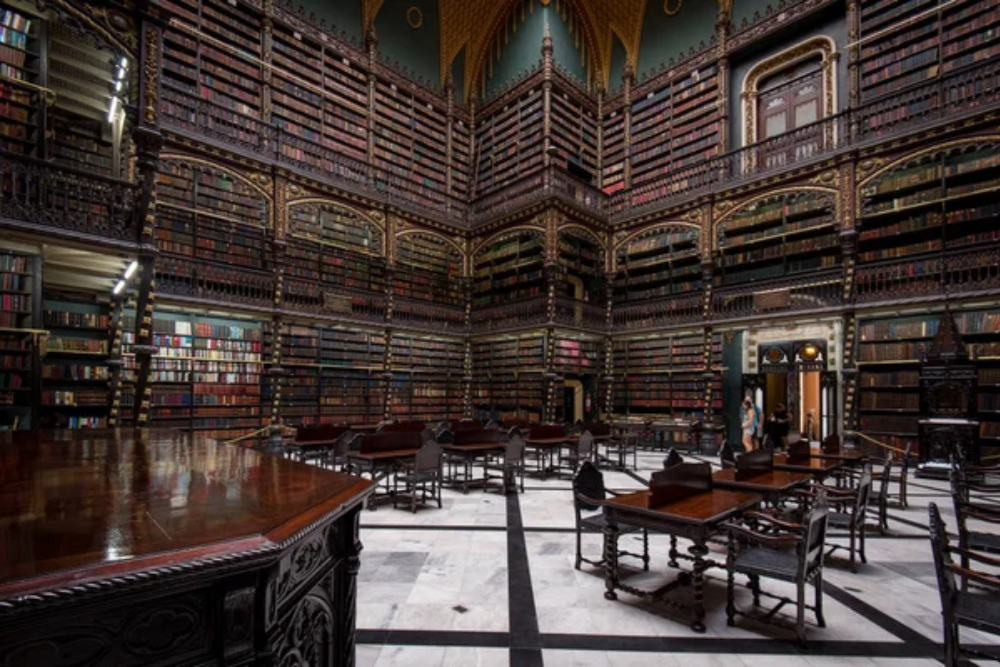
This Portuguese reading room combines Gothic Revival architecture with one of the largest collections of Portuguese literature outside Portugal, creating a cultural bridge between Brazil and its colonial heritage. Elaborate ironwork, stained-glass windows, and carved wooden details create a cathedral-like atmosphere.
At the same time, the collection includes rare editions, manuscripts, and contemporary works that preserve the Portuguese language and culture. The library’s founding by Portuguese immigrants exemplifies the enduring power of books to maintain cultural connections across the ocean.
New York Public Library, Stephen A. Schwarzman Building
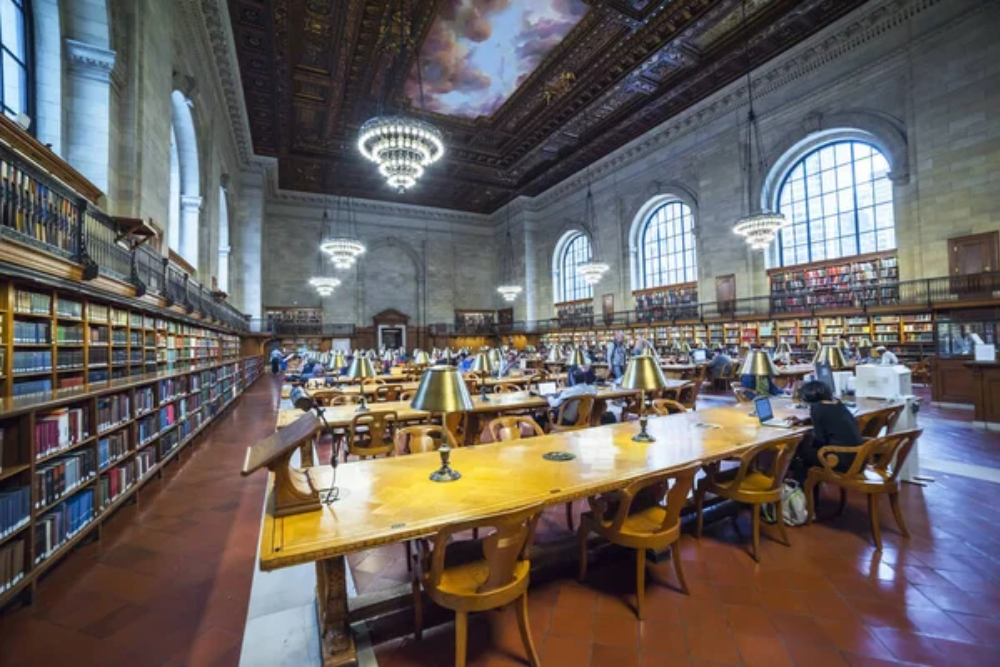
The Rose Main Reading Room stretches nearly two city blocks beneath arched windows and elaborately decorated ceilings, providing space for hundreds of researchers in one of America’s most democratic institutions. Patience and Fortitude, the famous lion statues, guard the Fifth Avenue entrance, while the McGraw Rotunda’s marble columns and murals celebrate the pursuit of knowledge.
The library’s research collections and public programs continue the institution’s mission of providing free access to information for all New York residents.
Biblioteca Joanina, University of Coimbra
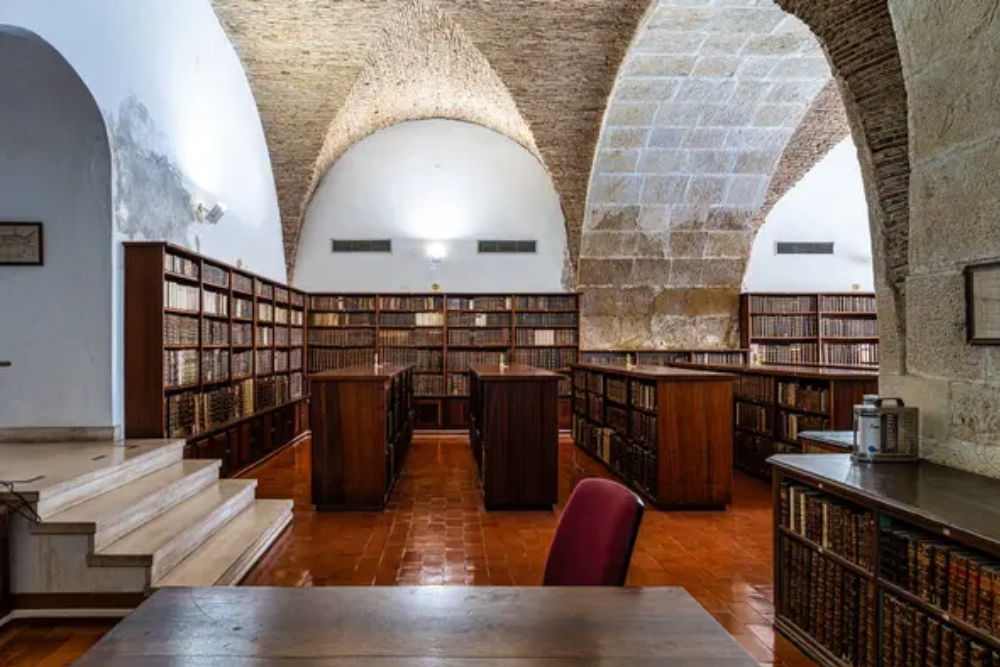
This 18th-century Baroque library boasts over 250,000 volumes within three rooms, each decorated with exotic woods, gold leaf, and trompe-l’oeil paintings that create the illusion of infinite space. The library’s unique ecosystem features a colony of bats that protect the books from insects.
At the same time, the collection encompasses works spanning law, philosophy, and theology, dating from the 16th to the 18th centuries. The building’s integration with the University of Coimbra’s historic campus demonstrates how libraries can anchor academic communities for centuries.
Like Travel Pug’s content? Follow us on MSN.
Library of Parliament, Ottawa
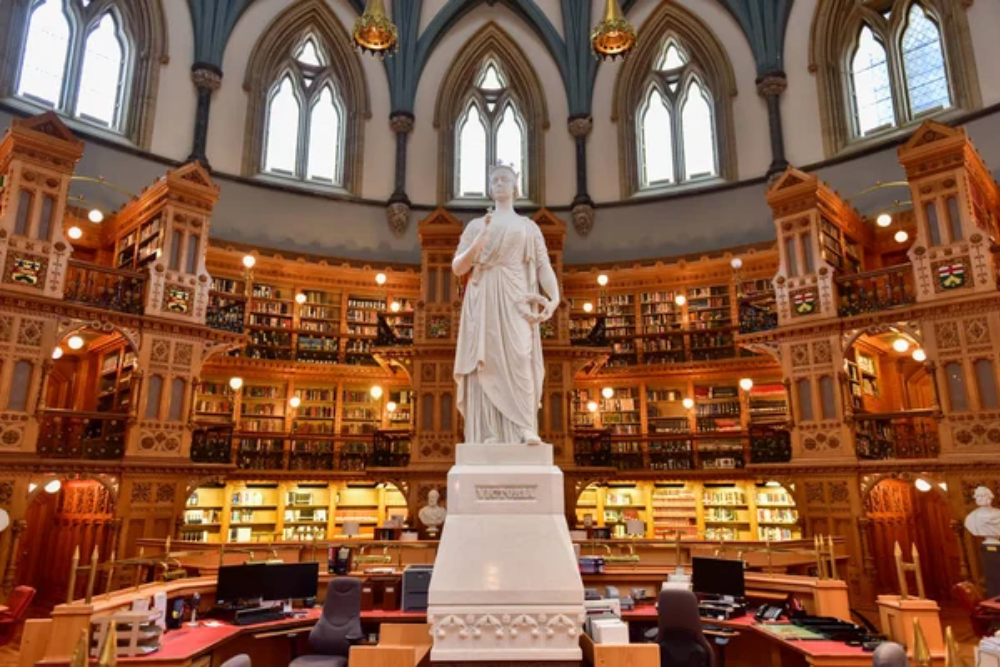
This circular library, situated at the heart of Canada’s Parliament Buildings, combines Gothic Revival architecture with functional design, creating a working library that serves the nation’s legislators while inspiring visitors with its beauty. Sixteen flying buttresses support the dome, while carved wooden details and stained-glass windows create an atmosphere of democratic dignity.
The library’s survival of the 1916 Parliament Buildings fire, thanks to iron doors that contained the blaze, adds historical significance to its architectural beauty.
Biblioteca Vasconcelos, Mexico City
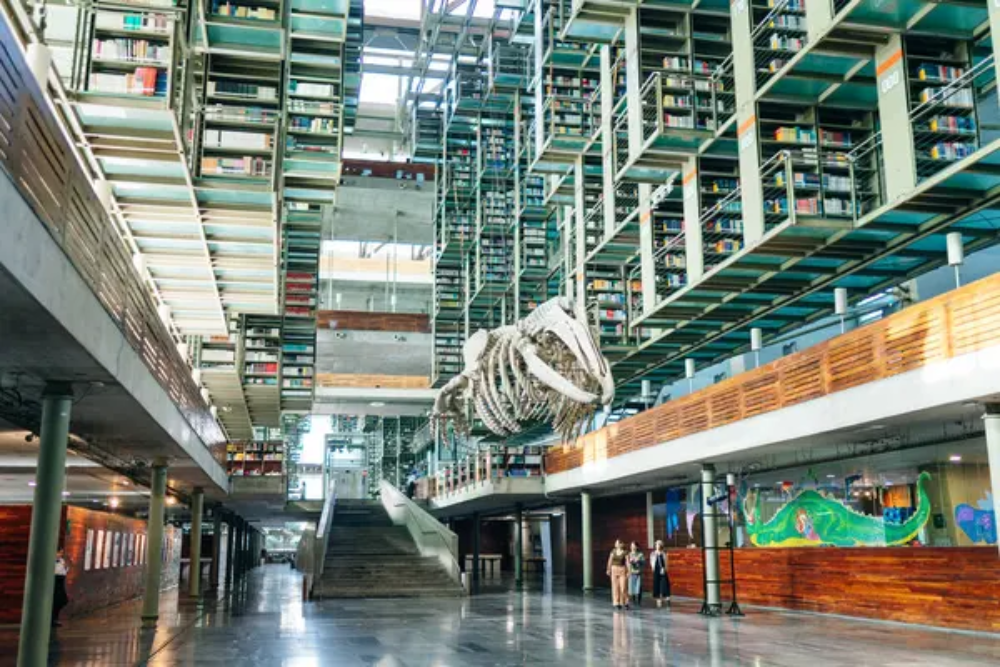
This contemporary library reimagines the traditional library through transparent architecture and suspended book collections that appear to float in mid-air, creating a futuristic environment for 21st-century learning. The building’s open design eliminates traditional barriers between different library functions, while natural light filtering through glass walls creates ever-changing atmospheric conditions throughout the day.
Multimedia collections and digital resources complement traditional books, demonstrating how libraries continue evolving while maintaining their essential mission.
Rampur Raza Library, India
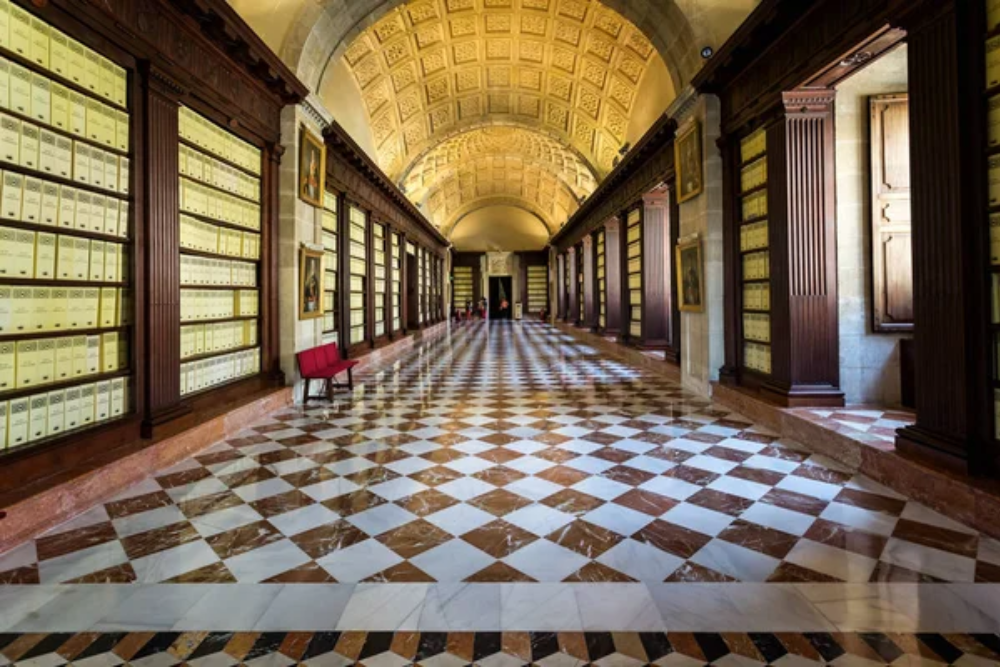
This Indo-Islamic library houses one of Asia’s most significant collections of manuscripts, rare books, and miniature paintings, set within an architectural complex that combines Mughal and colonial influences. The collection includes works in Arabic, Persian, Turkish, and Urdu that document centuries of Islamic scholarship, while the building’s courtyards and decorated chambers provide appropriate settings for these cultural treasures.
The library’s role in preserving Indian Islamic heritage makes it both an architectural and cultural landmark.
Like Travel Pug’s content? Follow us on MSN.
Seattle Central Library
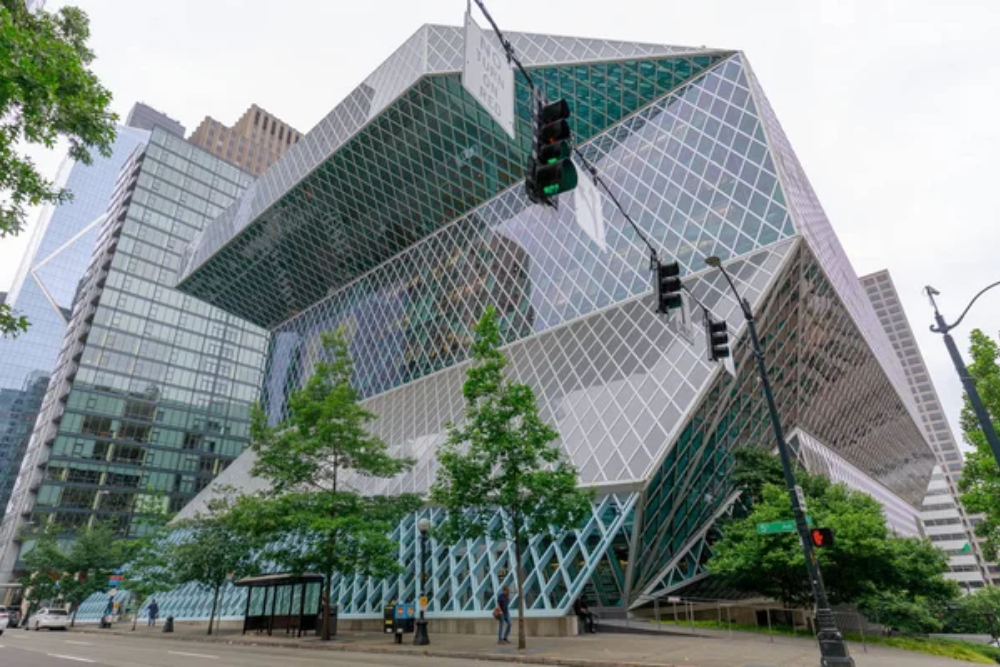
Rem Koolhaas designed this angular glass and steel structure to challenge traditional library concepts, creating dynamic spaces that flow between different functions while providing spectacular city views through diamond-shaped windows. The building’s innovative book spiral eliminates traditional floor divisions, allowing visitors to browse the entire non-fiction collection on a continuous path.
Public programs, meeting spaces, and technology centers demonstrate how modern libraries serve communities beyond their book collections.
Bibliothèque Sainte-Geneviève, Paris
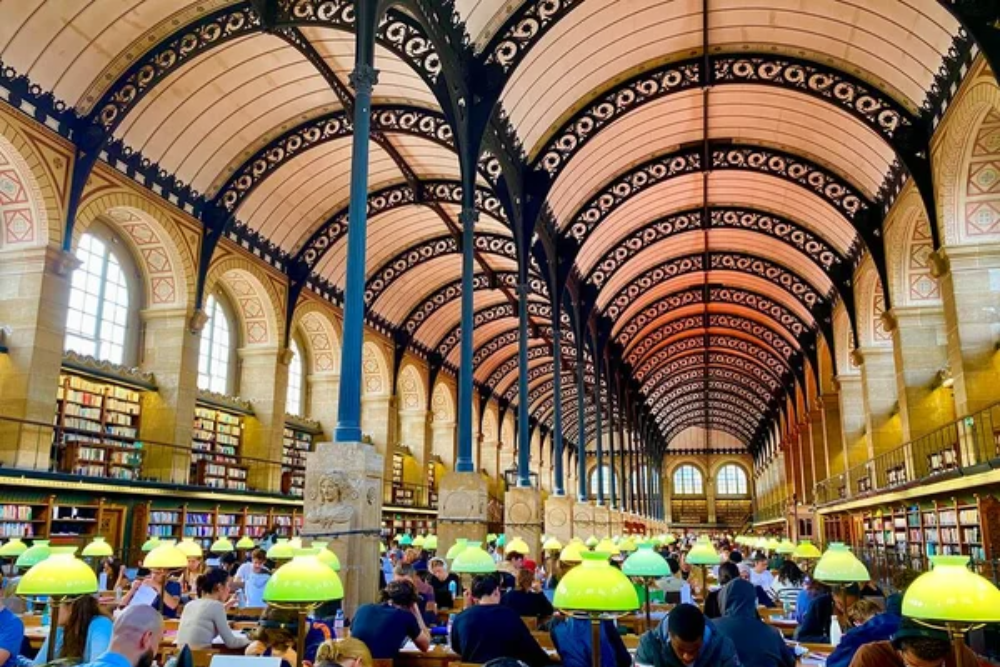
This 19th-century library pioneered the use of iron framework in library construction, creating vast reading rooms illuminated by natural light while housing collections focused on Nordic and Slavic literature. The building’s reading room inspired similar designs across Europe and America, while its collection serves researchers studying Northern European cultures and languages.
The library’s location in Paris’s Latin Quarter places it at the heart of the city’s intellectual life, continuing traditions that stretch back to medieval times.
Library of Mafra, Portugal
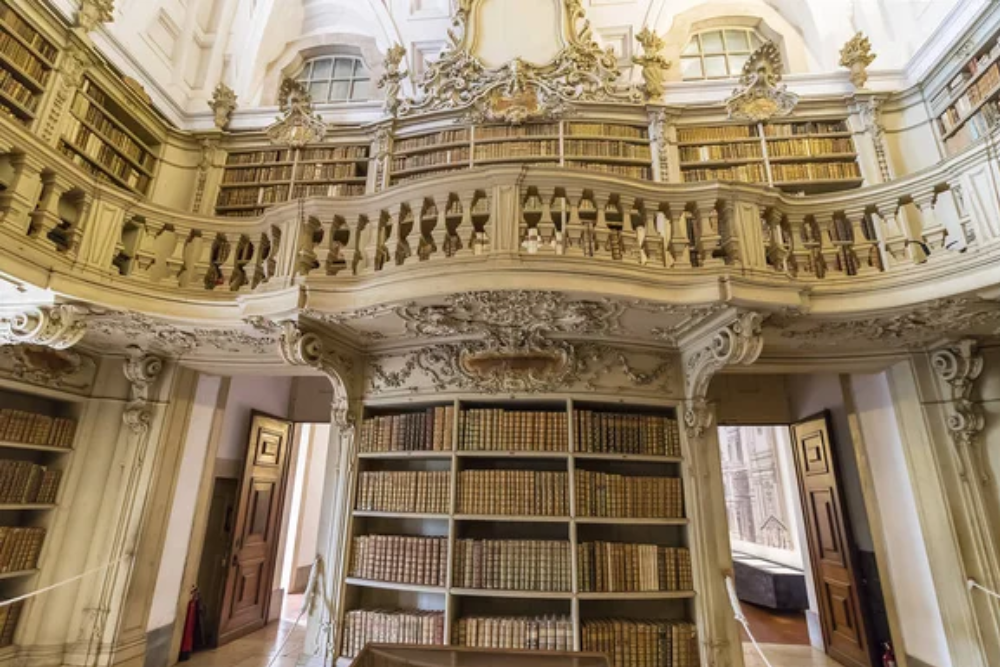
This monastic library houses over 36,000 volumes within a Baroque hall that stretches 273 feet through the Palace of Mafra, combining royal magnificence with scholarly purpose. The collection includes works banned by the Portuguese Inquisition alongside religious texts, creating a comprehensive record of 18th-century intellectual life.
The library’s integration within a palace complex demonstrates how Enlightenment rulers promoted learning while showcasing their cultural sophistication.
Like Travel Pug’s content? Follow us on MSN.
Thomas Fisher Rare Book Library, Toronto

This modernist building houses the University of Toronto’s rare book collections within climate-controlled environments that preserve manuscripts, incunabula, and contemporary works representing diverse cultures and periods. The building’s concrete and glass design creates an ideal atmosphere for scholarly research, while special exhibitions make rare materials accessible to a broader audience.
The collection’s strength in Canadian literature and history makes it essential for understanding the development of North American culture.
Biblioteca Angelica, Rome
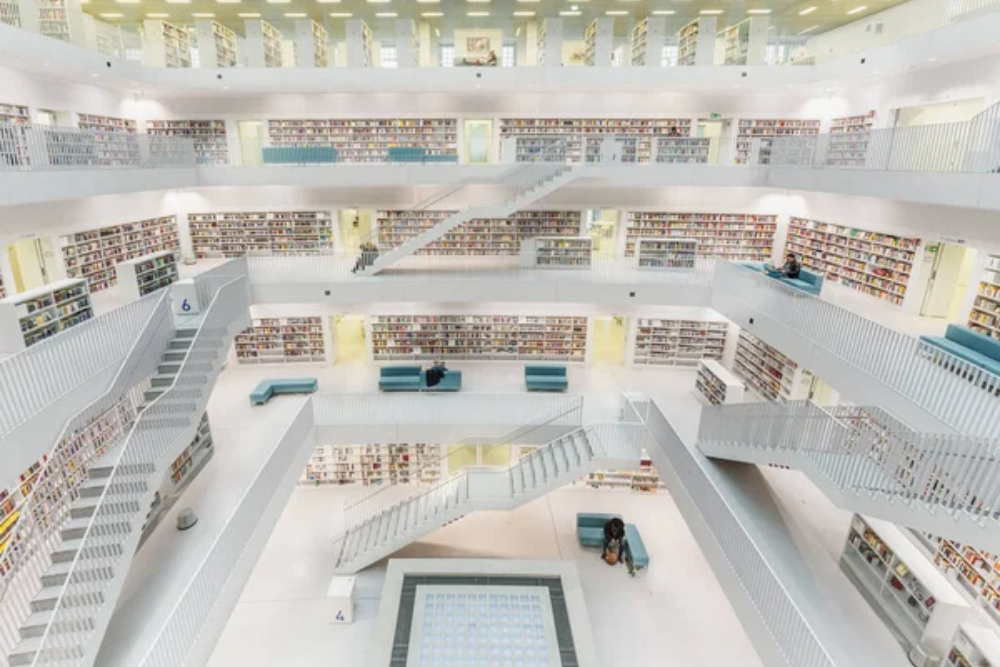
Founded in 1614 as Europe’s first public library, this institution continues serving readers within rooms decorated with period frescoes and furnished with historic reading desks that connect contemporary visitors to centuries of scholarship. The collection emphasizes theology, philosophy, and literature, while manuscripts and early printed books document the development of European intellectual traditions.
The library’s survival through political upheavals and wars demonstrates the enduring value communities place on preserving written knowledge.
Jay Walker’s Library, Connecticut

This private library showcases contemporary book collecting through climate-controlled environments, museum-quality displays, and technological integration that preserves and provides access to rare materials. The collection spans human knowledge, from ancient manuscripts to cutting-edge scientific publications, while the building’s design fosters an appropriate reverence for the intellectual achievements these books represent.
The library demonstrates how private collectors can contribute to preserving cultural heritage for future generations.
Like Travel Pug’s content? Follow us on MSN.
Temples of Human Knowledge
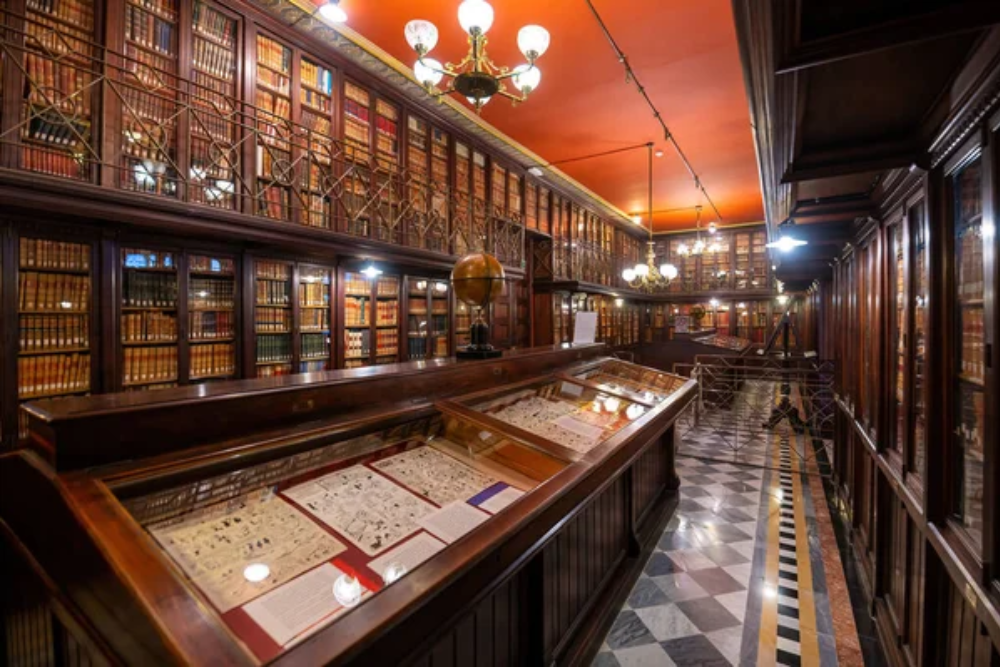
These magnificent libraries prove that societies throughout history have recognized the need to create beautiful spaces worthy of the knowledge they contain, understanding that inspiring environments enhance the learning experience while demonstrating cultural values that prioritize intellectual achievement. Each library reflects its era’s architectural styles, technological capabilities, and social attitudes toward learning and education. Yet, all share the common goal of making knowledge accessible while treating books with the reverence they deserve.
The fact that people continue building beautiful libraries in our digital age demonstrates that physical books and the spaces that house them remain essential to human culture, providing experiences that digital media cannot replicate. Whether ancient or modern, these libraries create connections between the past and present, the individual and community, the local and the universal, proving that beautiful spaces dedicated to learning remain among humanity’s greatest achievements.
More from Travel Pug

- 20 Best Beach Towns in the Carolinas
- 13 Destinations Where Tourists Regularly Regret Their Trip
- 20 Destinations That Are More Magical Without an Itinerary
- 20 Underrated Adventures That Belong on Your Travel List
- 20 Cities Where You Should Just Wing It, No Planning Required
Like Travel Pug’s content? Follow us on MSN.
